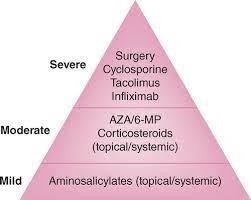A nurse is caring for a newborn who was born prematurely at 26 weeks. Which of the following interventions should the nurse take to decrease the newborn's risk of increased intracranial pressure?
Elevate the head of the bed 15° to 20°.
Stimulate the newborn every 2 hr.
Place the newborn in a radiant warmer.
Administer hypertonic solution.
The Correct Answer is A
Choice A rationale:
Elevating the head of the bed can help prevent intracranial pressure by promoting venous drainage from the head.
Choice B rationale:
Premature newborns need to rest and conserve energy, so excessive stimulation every 2 hours is not recommended.
Choice C rationale:
Placing the newborn in a radiant warmer helps maintain a stable body temperature, but it does not directly address intracranial pressure.
Choice D rationale:
Administering hypertonic solution is not a standard intervention for decreasing intracranial pressure in a premature newborn.
Nursing Test Bank
Naxlex Comprehensive Predictor Exams
Related Questions
Correct Answer is B
Explanation
Choice A rationale:
A positive Rheumatoid factor is associated with rheumatoid arthritis and is not an adverse effect of methotrexate.
Choice B rationale:
A low WBC count (leukopenia) is an adverse effect of methotrexate and can increase the risk of infection.
Choice C rationale:
A hemoglobin level of 14.8 g/dL is within a normal range and is not an adverse effect of methotrexate.
Choice D rationale:
An erythrocyte sedimentation rate (ESR) of 24 mm/hr is within a normal range and is not an adverse effect of methotrexate.
Correct Answer is B
Explanation
Choice A rationale
Omeprazole is a proton pump inhibitor used to reduce stomach acid production and is not typically used for treating bloody stools in inflammatory bowel disease.
Choice B rationale:
Infliximab is used to treat inflammatory bowel disease and can help manage symptoms such as bloody stools by suppressing the inflammatory response.
Choice C rationale:
Ondansetron is an antiemetic used for nausea and vomiting, not related to bloody stools.
Choice D rationale:
Metoclopramide is used to treat nausea, vomiting, and gastrointestinal motility disorders, not specifically indicated for bloody stools.

Whether you are a student looking to ace your exams or a practicing nurse seeking to enhance your expertise , our nursing education contents will empower you with the confidence and competence to make a difference in the lives of patients and become a respected leader in the healthcare field.
Visit Naxlex, invest in your future and unlock endless possibilities with our unparalleled nursing education contents today
Report Wrong Answer on the Current Question
Do you disagree with the answer? If yes, what is your expected answer? Explain.
Kindly be descriptive with the issue you are facing.
